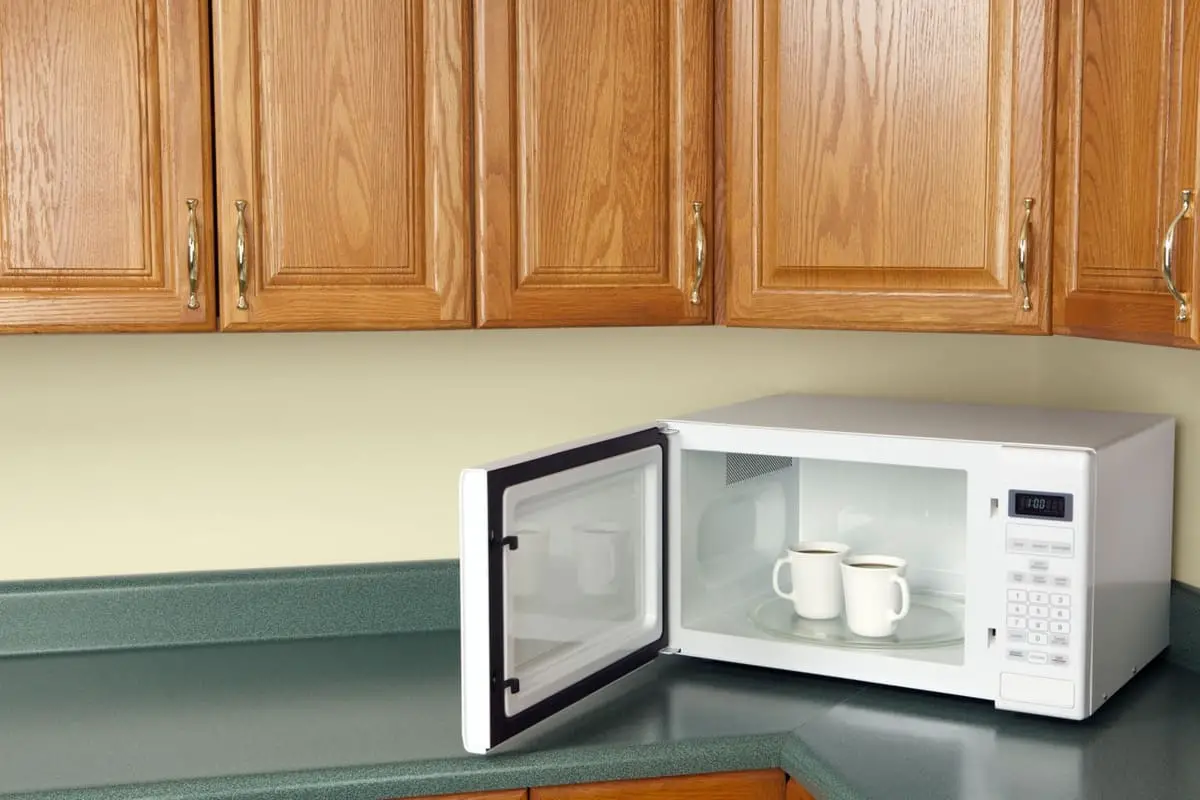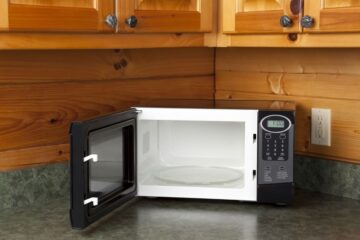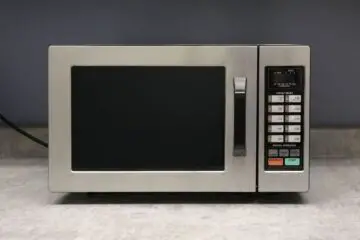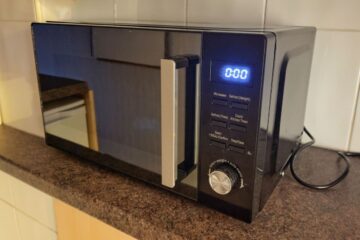Microwave ovens are a common household appliance that many people use every day. They are often used to quickly heat up food or beverages, and they can also be used to cook a variety of different dishes. But have you ever wondered how microwaves work?
Microwave ovens work by using electromagnetic waves to heat up food. These waves are produced by a component called a magnetron, which is located inside the oven. When the oven is turned on, the magnetron produces microwaves that are then directed into the cooking compartment by a waveguide. The microwaves bounce back and forth off the reflective metal walls of the food compartment, just like light bounces off a mirror. When the microwaves reach the food itself, they don’t simply bounce off. Instead, they penetrate inside the food and cause the water molecules in the food to vibrate rapidly, which produces heat.
While microwave ovens are a convenient and efficient way to heat up food, it’s important to use them safely. Users should always follow the manufacturer’s instructions when using their microwave oven, and they should never put metal objects inside the oven. Additionally, it’s important to be cautious when removing food from the oven, as the container and food itself may be very hot. By understanding how microwaves work and using them safely, users can enjoy the benefits of this popular appliance without any risks.
What are Microwaves?
Microwaves are a type of electromagnetic radiation that falls between radio waves and infrared radiation on the electromagnetic spectrum. They have a wavelength between 1 millimeter and 1 meter, and a frequency between 300 MHz and 300 GHz. Microwaves are used in a variety of applications, including telecommunications, radar, and cooking.
Electromagnetic Spectrum
The electromagnetic spectrum is the range of all types of electromagnetic radiation. It includes radio waves, microwaves, infrared radiation, visible light, ultraviolet radiation, X-rays, and gamma rays. Each type of electromagnetic radiation has a different wavelength and frequency.
Microwaves are a type of electromagnetic radiation that has a shorter wavelength and higher frequency than radio waves. They are often used for communication because they can travel long distances through the atmosphere without being absorbed or scattered.
Properties of Microwaves
Microwaves have several important properties that make them useful for cooking. First, they are absorbed by water, fats, and sugars, which are the main components of many foods. When microwaves are absorbed by these substances, they cause the molecules to vibrate rapidly, which generates heat.
Second, microwaves are reflected by metal, which is why metal objects should never be put in a microwave oven. The microwaves bounce off the metal and can cause sparks or even a fire.
Finally, microwaves can penetrate some types of materials, such as glass, plastic, and paper. This allows them to heat food evenly throughout, without creating hot spots or cold spots.
How Microwaves Work?
Microwave ovens are a ubiquitous appliance found in most modern kitchens. They are incredibly useful for quickly heating up food and beverages. But how do microwaves work? In this section, we will explore the various components of a microwave oven and how they work together to produce the microwaves that cook our food.
Microwave Generator
At the heart of a microwave oven is a device called a magnetron. The magnetron is responsible for generating the microwaves that cook our food. Inside the magnetron, electrical energy from a power outlet is channeled to a heated filament, creating a flow of electrons that transmits microwaves into the cooking chamber through an antenna. The magnetron ramps up the electricity from a 120-volt wall outlet to an incredible 3,000 volts or more, which is necessary to create the microwaves.
Microwave Cavity
The cooking chamber of a microwave oven is called the microwave cavity. The cavity is made of metal and is designed to reflect the microwaves produced by the magnetron. The food sits on a turntable, spinning slowly around so the microwaves cook it evenly. The microwaves bounce back and forth off the reflective metal walls of the food compartment, just like light bounces off a mirror. When the microwaves reach the food itself, they don’t simply bounce off. Instead, they penetrate the food and cause the molecules to vibrate.
Microwave Frequencies and Wavelengths
Microwaves are a type of electromagnetic radiation with a frequency range of 300 MHz to 300 GHz. The wavelength of microwaves is much longer than that of visible light, ranging from 1 millimeter to 1 meter. The frequency of the microwaves is carefully chosen to match the resonant frequency of water molecules, which are the primary absorbers of microwave energy. This is why microwaves are so effective at heating up food, as most foods contain water.
Absorption and Reflection of Microwaves
When microwaves encounter a material, they can either be absorbed or reflected. Materials that contain water, such as food, absorb microwaves and convert the energy into heat. This is why food heats up so quickly in a microwave oven. However, materials that do not contain water, such as metal, reflect microwaves and can cause sparks or fires in the oven. This is why it is important to never put metal objects in a microwave oven.
In summary, a microwave oven works by generating microwaves using a magnetron, reflecting these microwaves inside a metal cavity, and absorbing them into the food to heat it up. Understanding how microwaves work can help us use them properly and safely.
Applications of Microwaves
Microwaves have revolutionized the way we live, work, and communicate. From cooking food to guiding airplanes, microwaves have a wide range of applications in our daily lives. In this section, we will explore some of the most common applications of microwaves.
Microwave Ovens
Microwave ovens are perhaps the most common application of microwaves in our daily lives. They work by emitting microwaves that penetrate the food and cause the water molecules in the food to vibrate, which generates heat and cooks the food. Microwave ovens are faster and more energy-efficient than conventional ovens, and they are widely used in homes, restaurants, and other food service establishments.
Communication Systems
Microwaves are also used in communication systems to transmit information over long distances. They are used in radio and television broadcasting, as well as in satellite communication systems. Microwaves have a high frequency and short wavelength, which allows them to carry large amounts of information over long distances without being affected by interference from other signals.
Radar Systems
Radar systems use microwaves to detect the presence, location, and speed of objects. They are used in air traffic control, weather forecasting, and military applications. Radar systems work by emitting a microwave signal and then measuring the time it takes for the signal to bounce back from an object. This information can be used to determine the distance, location, and speed of the object.
Medical Applications
Microwaves are also used in medical applications, such as in microwave ablation therapy. This is a minimally invasive treatment that uses microwaves to destroy cancerous tumors. The microwaves are directed at the tumor, which heats up and is destroyed. This treatment is less invasive than surgery and has fewer side effects.
In conclusion, microwaves have a wide range of applications in our daily lives, from cooking food to guiding airplanes and treating cancer. They are a powerful and versatile tool that has revolutionized the way we live, work, and communicate.
Safety Concerns
Microwave ovens are a common kitchen appliance that can be found in most households. While they are generally considered safe to use, there are some safety concerns that users should be aware of.
Microwave Leakage
One of the main safety concerns with microwave ovens is the potential for microwave leakage. Microwaves are a form of electromagnetic radiation, and if they leak out of the oven, they can potentially be harmful to humans.
According to the FDA, all microwave ovens sold in the United States must meet strict safety standards to ensure that they do not leak harmful levels of microwave radiation. However, it is still possible for a microwave oven to develop a leak over time, especially if it is damaged or has been improperly maintained.
To minimize the risk of microwave leakage, users should make sure to inspect their microwave oven regularly for signs of damage or wear. If any damage is detected, the oven should be repaired or replaced immediately. Additionally, users should always make sure that the door of the microwave oven is properly sealed and that there are no gaps or cracks that could allow microwaves to escape.
Microwave Burns
Another safety concern with microwave ovens is the potential for burns. Microwave ovens can heat food and liquids very quickly, and if they are not used properly, they can cause serious burns.
To avoid burns, users should always follow the manufacturer’s instructions for using their microwave oven. They should also use caution when removing hot food or liquids from the oven, as they may be hotter than expected.
Users should also be aware that certain types of containers, such as those made of metal or plastic, can cause fires or explosions in the microwave oven. To avoid this risk, users should only use containers that are specifically labeled as microwave-safe.
Conclusion
In conclusion, microwaves work by using electromagnetic radiation to heat up food. The microwaves are produced by a device called a magnetron, which channels electrical energy from a power outlet to a heated filament. This creates a flow of electrons that in turn transmits microwaves into the cooking chamber through an antenna.
As the microwaves travel through the food, they make the molecules inside it vibrate more quickly, causing them to heat up. This is why microwaves are particularly effective at heating up food with a high water content, such as soups or stews.
It is important to note that while microwaves are a convenient and efficient way to heat up food, they can also have some downsides. For example, microwaving food can lead to uneven heating, which can result in hot spots that can burn your mouth. Additionally, some studies have suggested that microwaving food can reduce its nutritional content.



